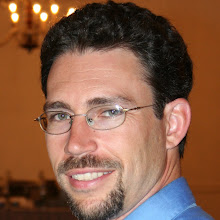I believe that the religion of "documentarianism" is rooted in external accountability. When we do our SIPs to satisfy the requirements of an external entity (make them pretty), those goals are almost guaranteed to be ineffective. I ran across the following quote from Dr. Richard Elmore of Harvard this summer:
"[I]nternal accountability precedes external accountability. That is, school personnel must share a coherent, explicit set of norms and expectations about what a good school looks like before they can use signals from the outside to improve student learning. Giving test results to an incoherent, atomized, badly run school doesn’t automatically make it a better school. The ability of a school to make improvements has to do with the beliefs, norms, expectations, and practices that people in the organization share, not with the kind of information they receive about their performance. Low-performing schools aren’t coherent enough to respond to external demands for accountability."Because of this quote, I went about creating our school goals in a different way this year. Rather than starting with test data in hand - looking for deficiencies. I started with our shared beliefs, mission and vision. According to Jim Collins in Good to Great, our reason for existence, core values and BHAG (Big Hairy Audacious Goal) should be aligned with each other and with the actions we take. This was far more difficult than writing the goals that I had written for the past 3 years (which were pretty but ineffective) - we had to come to a shared understanding of what our core beliefs are, do some visioning and revise our mission first. But, that was just the beginning of the increased difficulty that I encountered.
http://snipurl.com/3ltea
Next, knowing that our core beliefs, vision and mission were focused on dispositions as well as skills (life long learners, whole child, etc.) I struggled with figuring out how to balance the focus of our goal. In addition, I struggled with fitting my focus for our goals into the SMART format (a prettiness measure if you ask me). Specifically, I struggled with the measurability aspect of it.
"Not everything that counts can be counted, and not everything that can be counted counts" - Albert Einstein.How do you measure dispositions? I decided to go with pre and post surveys. We are not really that happy with this form of measurement, but don't really know how else to make it measurable. I made our goals pretty for the requirements of an external source, but to us they have become ugly.
Good Lord Boyet, my beauty, though but mean,
Needs not the painted flourish of your praise:
Beauty is bought by judgement of the eye,
Not utter'd by base sale of chapmen's tongues.
- Shakespeare - Love's Labours Lost, 1588





I strongly agree with your thoughts! One of the things I dislike about our essentials is that they can only be things that are easily tested. We are continuing that in our curriculum creation. We leave out some of the most important things! By the way I am sending this on the touch from the hospital in steamboat!
ReplyDelete